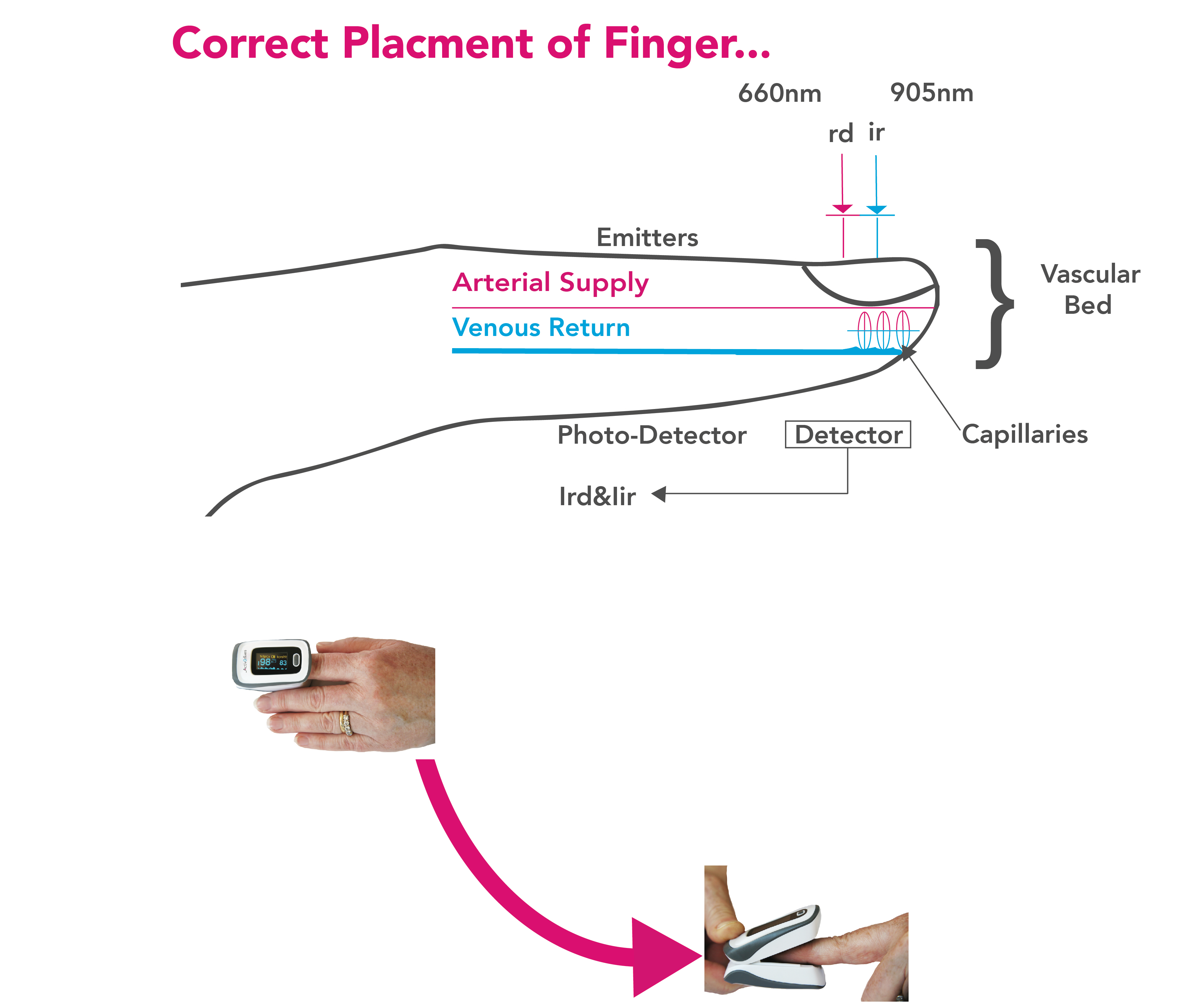Blood Oxygen Saturation – Pulse Oximetry
Pulse oximetry is a non-invasive method allowing the monitoring of the saturation of a patient’s haemoglobin in arterial blood.
A sensor is placed on a thin part of the patient’s body, usually a fingertip or earlobe. Light of two different wavelengths is passed through the patient to a photodetector. The changing absorbance at each of the wavelengths is measured, allowing determination of the absorbance’s due to the pulsing arterial blood alone, excluding venous blood, skin, bone, muscle, fat, and (in most cases) nail polish.
Human beings depend on oxygen for life. All organs require oxygen for metabolism but the brain and heart are particularly sensitive to a lack of oxygen. Shortage of oxygen in the body is called hypoxia. A serious shortage of oxygen for a few minutes is fatal. The Pulse Oximeter measures and displays the level of oxygen saturation (SpO2) as a percentage and the pulse rate in beats per minute, averaged over 5 to 20 seconds. Normally SpO2 should be 95% or above. If SpO2 is 94% or below, the individual must be medically assessed quickly to identify and treat the cause. An SpO2 of < 90% is a clinical emergency and should be treated immediately.
If you are concerned about your Blood Oxygen Saturation levels, contact your medical team and follow their advice exactly.

